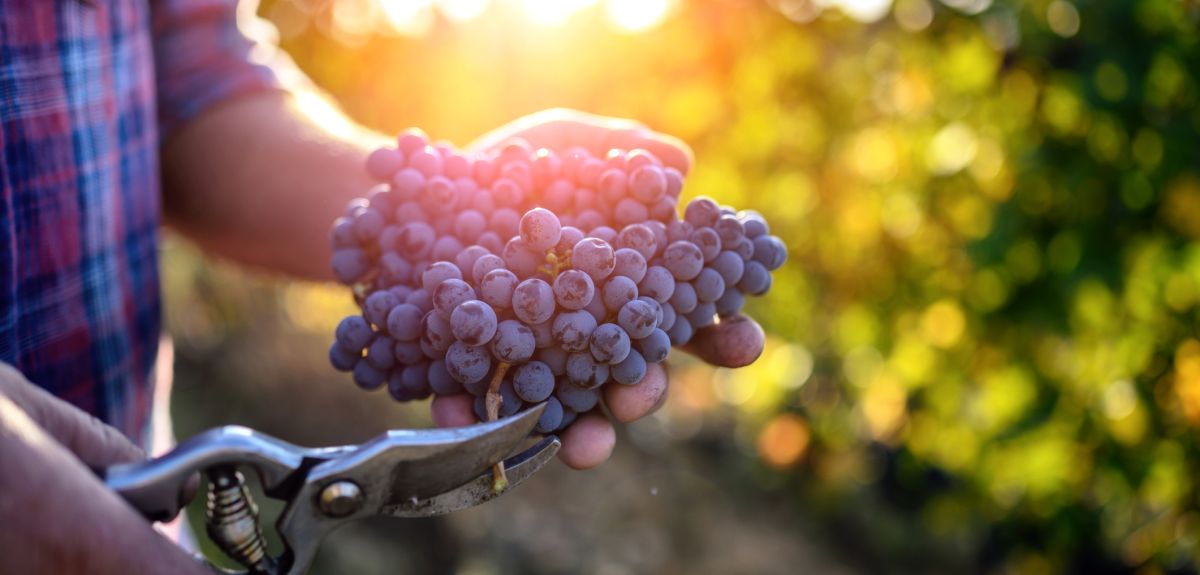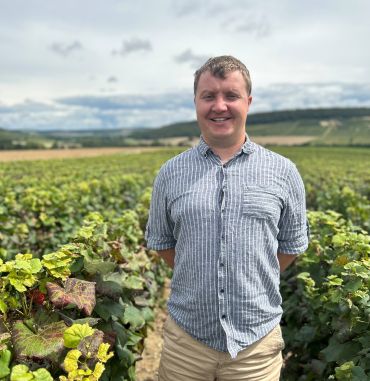
New research finds that warm summers and wet winters yield better wine vintages
Wine quality is notorious for varying from year to year, but what makes for a “good year”? A new study led by the University of Oxford has found that weather plays a critically important role in determining wine quality. By analysing 70 years’ worth of wine critic scores from the Bordeaux wine region in relation to that year’s weather, the researchers showed that higher quality wine is made in years with warmer temperatures, higher winter rainfall, and earlier, shorter growing seasons—conditions that climate change is predicted to make more frequent. The results have been published today in the journal iScience.
 Lead researcher Andrew Wood (Department of Biology, University of Oxford).
Lead researcher Andrew Wood (Department of Biology, University of Oxford).
The same vineyard can produce different vintage qualities in different years, despite those wines coming from grapes grown on the same vines, on the same land, and being produced by the same methods. How yearly fluctuations in weather influences wine quality has been a long-standing question. A newer, related, question is how climate change might impact wine quality. Weather and climate—the latter describing the weather over a long period of time—are expected to impact crops, but the link between climate change and agricultural produce quality has not been widely explored.
To investigate how weather and climate impact wine quality, the researchers paired high-resolution climate data with annual wine critic scores from the Bordeaux wine region in southwest France from 1950 to 2020. They analysed wine quality both at the regional scale (i.e., how did Bordeaux wine quality in general vary from year to year?) and on a more local scale, focusing on yearly variation in wine quality for individual “appellations d’origine contrôlée” (AOCs) within Bordeaux—specific geographical regions with defined methods of grape cultivation and wine production. Then, they used models to test whether wine quality was impacted by weather factors such as season length and ranges and shifts in temperature and precipitation.
‘The trend, whether that’s driven by the preferences of wine critics or the general population, is that people generally prefer stronger wines which age for longer and give you richer, more intense flavours, higher sweetness, and lower acidity. And with climate change generally, we are seeing a trend across the world that with greater warming, wines are getting stronger.
Andrew Wood, Department of Biology, University of Oxford.
Unlike previous studies that focused only on weather during the growing season, this study also investigated the impact of weather during the non-growing winter season, when grape vines are usually dormant. ‘Perennial crops like grapes are there all the time, and so things that happen outside of the growing season can also impact the wine’ said Wood.
The researchers chose to focus on Bordeaux because it is a wine region that relies exclusively on rainfall for irrigation and because Bordeaux has long-term records of wine scores. This enabled them to leverage merchant wine scores from 1950 to 2020 for the overall region and wine critic scores from 2014 to 2020 for the individual AOCs. Wine judging is subjective and unblinded, meaning that wine critics know the origins of the wines they taste. However, because most critics agree on what is a “good” vs a “bad” wine, the authors say that quality is ‘a non-subjective property of perennial crops’ that could be used to monitor how crops are changing long-term.
Overall, the researchers found that Bordeaux wine quality scores tended to improve between 1950 and 2020. Though this could be because Bordeaux’s climate warmed over that period; because of the rising use of technology in wine making over this period; or because wine makers are increasingly matching their techniques to consumer preferences.
With the predicted climates of the future, given that we are more likely to see these patterns of warmer weather and less rainfall during the summer and more rainfall during the winter, the wines are likely to continue to get better.
Andrew Wood, Department of Biology, University of Oxford.
The team found that weather impacted wine quality throughout the year, not just during the growing season. In general, high-quality wines were associated with cooler, wetter winters; warmer, wetter springs; hot, dry summers; and cool, dry autumns. Given that climate change is resulting in these types of weather patterns in Bordeaux, the researchers say that wine in this region is likely to continue to increase in quality as climate change progresses.
However, this is true only up until the point at which water becomes limited. ‘The problem in scenarios where it gets really hot is water: if plants don’t have enough, they eventually fail, and when they fail, you lose everything,’ said Wood. ‘But the general idea or consensus is that the wines will continue to get better up to the point where they fail.’
Though the study focused on Bordeaux wines, the researchers suspect that their results also apply to other wine regions. Testing this is the next step. The methods could also be extended to examine the impact of yearly weather variation and climate change on other perennial crops, such as cocoa and coffee, if long-term quality records are available.
The study ‘Seasonal Climate Impacts Wine Quality in Bordeaux’ has been published in iScience.
This research was supported by the Biotechnology and Biological Sciences Research Council.
 New study finds that ChatGPT amplifies global inequalities
New study finds that ChatGPT amplifies global inequalities
 Expert Comment: Chatbot-driven sexual abuse? The Grok case is just the tip of the iceberg
Expert Comment: Chatbot-driven sexual abuse? The Grok case is just the tip of the iceberg